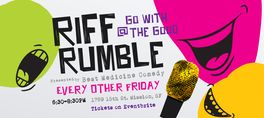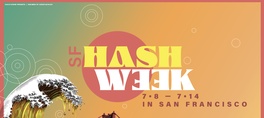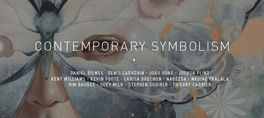Wed June 17, 2015
Lumière d'été (Jean Grémillon, France, 1943)
SEE EVENT DETAILS
at PFA Theater
(see times)
(Summer Light)
Jean Grémillon was invited by Langlois to become a member of the Cinémathèque in 1943, and became president the following year. His work occupies a special place in the history of the organization. “He was the president who arrived at a moment when no one else—we have since realized—could have done what he did for the Cinémathèque, at the time when he took it and safeguarded it,” recalled Langlois. Although it was never released in this country, for many British and French critics Lumière d’été stands alongside Children of Paradise as a masterpiece of French cinema made during the German Occupation. A remote mountain inn is the setting for a class-crossed love affair, in a melodrama that climbs to a violent climax on tensions built into Jacques Prévert’s script and echoed in Grémillon’s charged imagery. Lumière d’été is a study of two worlds: the working class, pictured as healthy and cohesive, and the rich—idle, self-pitying, and debauched. Its critique, reminiscent of Renoir’s Rules of the Game, did not escape the notice of Vichy censors, and the film was banned for the duration. In 1947 Langlois and the Cinémathèque carried out the duplication of two 16mm prints and preserved documents on the making and promotion of the film.
• Written by Jacques Prévert, Pierre Laroche. Photographed by Louis Page. With Paul Bernard, Pierre Brasseur, Madeleine Robinson, Madeleine Renaud. (112 mins, In French with English subtitles, B&W, DCP, From La Cinémathèque française, Restored by SNC – Groupe M6 and La Cinémathèque française.)
Followed by:
Parlons cinema— A propos du cinéma dans la résistance (excerpts)
(Harry Fischbach, Canada, 1976, 8 mins)
Total running time: 120 mins
show less
Jean Grémillon was invited by Langlois to become a member of the Cinémathèque in 1943, and became president the following year. His work occupies a special place in the history of the organization. “He was the president who arrived at a moment when no one else—we have since realized—could have done what he did for the Cinémathèque, at the time when he took it and safeguarded it,” recalled Langlois. Although it was never released in this country, for many British and French critics Lumière d’été stands alongside Children of Paradise as a masterpiece of French cinema made during the German Occupation. A remote mountain inn is the setting for a class-crossed love affair, in a melodrama that climbs to a violent climax on tensions built into Jacques Prévert’s script and echoed in Grémillon’s charged imagery. Lumière d’été is a study of two worlds: the working class, pictured as healthy and cohesive, and the rich—idle, self-pitying, and debauched. Its critique, reminiscent of Renoir’s Rules of the Game, did not escape the notice of Vichy censors, and the film was banned for the duration. In 1947 Langlois and the Cinémathèque carried out the duplication of two 16mm prints and preserved documents on the making and promotion of the film.
• Written by Jacques Prévert, Pierre Laroche. Photographed by Louis Page. With Paul Bernard, Pierre Brasseur, Madeleine Robinson, Madeleine Renaud. (112 mins, In French with English subtitles, B&W, DCP, From La Cinémathèque française, Restored by SNC – Groupe M6 and La Cinémathèque française.)
Followed by:
Parlons cinema— A propos du cinéma dans la résistance (excerpts)
(Harry Fischbach, Canada, 1976, 8 mins)
Total running time: 120 mins
(Summer Light)
Jean Grémillon was invited by Langlois to become a member of the Cinémathèque in 1943, and became president the following year. His work occupies a special place in the history of the organization. “He was the president who arrived at a moment when no one else—we have since realized—could have done what he did for the Cinémathèque, at the time when he took it and safeguarded it,” recalled Langlois. Although it was never released in this country, for many British and French critics Lumière d’été stands alongside Children of Paradise as a masterpiece of French cinema made during the German Occupation. A remote mountain inn is the setting for a class-crossed love affair, in a melodrama that climbs to a violent climax on tensions built into Jacques Prévert’s script and echoed in Grémillon’s charged imagery. Lumière d’été is a study of two worlds: the working class, pictured as healthy and cohesive, and the rich—idle, self-pitying, and debauched. Its critique, reminiscent of Renoir’s Rules of the Game, did not escape the notice of Vichy censors, and the film was banned for the duration. In 1947 Langlois and the Cinémathèque carried out the duplication of two 16mm prints and preserved documents on the making and promotion of the film.
• Written by Jacques Prévert, Pierre Laroche. Photographed by Louis Page. With Paul Bernard, Pierre Brasseur, Madeleine Robinson, Madeleine Renaud. (112 mins, In French with English subtitles, B&W, DCP, From La Cinémathèque française, Restored by SNC – Groupe M6 and La Cinémathèque française.)
Followed by:
Parlons cinema— A propos du cinéma dans la résistance (excerpts)
(Harry Fischbach, Canada, 1976, 8 mins)
Total running time: 120 mins
read more
Jean Grémillon was invited by Langlois to become a member of the Cinémathèque in 1943, and became president the following year. His work occupies a special place in the history of the organization. “He was the president who arrived at a moment when no one else—we have since realized—could have done what he did for the Cinémathèque, at the time when he took it and safeguarded it,” recalled Langlois. Although it was never released in this country, for many British and French critics Lumière d’été stands alongside Children of Paradise as a masterpiece of French cinema made during the German Occupation. A remote mountain inn is the setting for a class-crossed love affair, in a melodrama that climbs to a violent climax on tensions built into Jacques Prévert’s script and echoed in Grémillon’s charged imagery. Lumière d’été is a study of two worlds: the working class, pictured as healthy and cohesive, and the rich—idle, self-pitying, and debauched. Its critique, reminiscent of Renoir’s Rules of the Game, did not escape the notice of Vichy censors, and the film was banned for the duration. In 1947 Langlois and the Cinémathèque carried out the duplication of two 16mm prints and preserved documents on the making and promotion of the film.
• Written by Jacques Prévert, Pierre Laroche. Photographed by Louis Page. With Paul Bernard, Pierre Brasseur, Madeleine Robinson, Madeleine Renaud. (112 mins, In French with English subtitles, B&W, DCP, From La Cinémathèque française, Restored by SNC – Groupe M6 and La Cinémathèque française.)
Followed by:
Parlons cinema— A propos du cinéma dans la résistance (excerpts)
(Harry Fischbach, Canada, 1976, 8 mins)
Total running time: 120 mins
show less
Date/Times:
PFA Theater
2575 Bancroft Way, Berkeley, CA 94720
The Best Events
Every Week in Your Inbox
From Our Sponsors
UPCOMING EVENTS
Great suggestion! We'll be in touch.
Event reviewed successfully.








